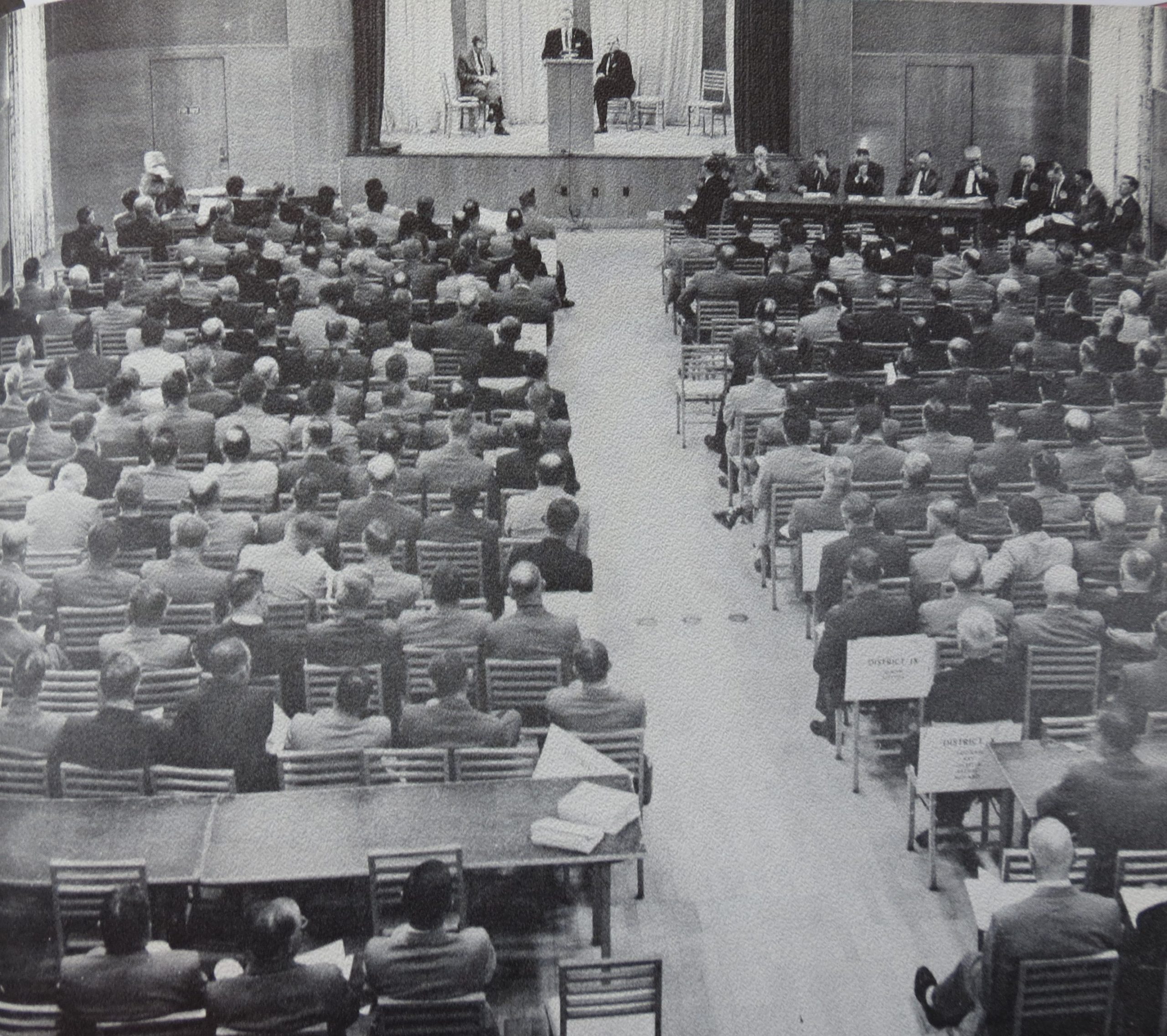It was 1919 and the third largest industry in the United States was dairy and the newly formed Michigan Milk Producers Association was getting ready for their third annual meeting to be held in East Lansing at the Michigan Agricultural College.
The announcement of the meeting began with this:
“Our vision of the battle front must change. It is not only with the local market, but it is in the halls of the Legislature and Congress. We must forget that we are members of any political party; we must remember we are to protect the interests of our business and our homes with our voice and our vote.”
This meeting was on the heels of the arrest of several Ohio dairymen who refused to sell their milk for under the cost of production. They were arrested late at night, taken to a Cleveland jail and not allowed bond or a phone call. The crime for which they were indicted was simply that they refused collectively to sell the product of their labor for less than the cost of production. And this was not an isolated case, according to the 1919 Michigan Milk Messenger, this was happening coast to coast.
The program for the 1919 annual meeting included discussion of how the government should interact with an organized dairy industry, the problems that had cropped up in Ohio and the President of the National Holstein Friesian Association, D.D. Aitken, was slated to speak on collective bargaining and legislation needed in Michigan.
Clearly the early growing pains of a newly formed milk cooperative were being felt while dairymen from around the state were gaining a voice in marketing their milk. And when the annual meeting commenced there was a showing of over 650 people in attendance with every county in central and southern Michigan being represented. Members wanted an active role in the association and visibly showed their desire to be heard.
The keynote of every address according to the Michigan Milk Messenger was a patriotic devotion to the well-being of the nation and a desire to stabilize food production so that in the years to come farmers ‘shall be able to supply the necessary food that will give physical and mental strength to this and coming generations.’
The 1930s arrived and milk consumption dropped like a rock. Not only were they not drinking milk but consumers began using the new butter substitute: Oleo. With depressed commodity prices, farmers were struggling. Non MMPA members were selling their milk to markets below the cost of production and this was forcing the MMPA sales committee to sell milk at this cut-rate price as well. Being on the sales committee was a tough job through these years but the economy didn’t stop members from participating in the business of their cooperative. The annual meeting in 1931 was well attended and President N.P. Hull didn’t pull any punches. He concluded his meeting address by saying:
“I have tried to lay before you the absolute truth of the situation as it prevails at the present time. These are dreadful times, but we are going to come out of them. Let us be wise and prayerful and try to bring agriculture out of these times in the best way we can and in doing that we will have done our duty as men, and that is all that angels can do.”
The optimistic attitude that initiated the cooperative in 1916 continued to drive the organization through the Great Depression and World War II. Farmers were charged with the task of producing more and more food for a hungry world at war—and they did. While the young men left the farm to go to war, the families were left behind to expand the farm and increase production. But post-war concerns surrounded how to use up the expanded milk production. Once again the membership showed up at their annual meeting and heard this from President Ivan Maystead:
“We are told that farmers will not stick together. The Michigan Milk Producers Association, entering the 30th year of its existence, gives the lie to this statement. True, the association has a constructive program and renders services, but the loyalty and support of its members are the backbone of its existence. Your continued loyalty and support will assure another 30 years of success.”
And it did.
By the 1950s dairy farming was no longer a way of life but a business and the members of the cooperative wanted more out of their association. Farmers knew how their milk was marketed but they wanted to know more about what the inner workings of the cooperative. While MMPA was created as a bargaining association, it had expanded to become the owner of manufacturing plants, receiving stations and transportation facilities.
In 1959 milk marketed by the association, reached a new high of 2.3 billion pounds valued at about $95.5 million dollars. Production per member was up over 64 percent in the previous five years. The following year the annual meeting garnered nearly record attendance and President Jack Barns informed attendees that MMPA had achieved new records in practically every field in which it was active. Milk numbers were up three percent from the year before and the average dollar returns per member rose 7.5 percent. The following month milk hit $5.30/cwt, the highest in three years.
Through the 60s, 70s and 80s, milk plants were purchased, sold or closed. Milk promotion exploded and milk marketing continued an ebb and flow in efforts to keep farmers profitable. The early 90s brought about a drastic drop in milk prices but increased a resiliency to continue through the difficult days.
Prices would fluctuate, but the dedication of the members to the association and the leaders to the members would continue to grind out a cooperative that would survive into a new millennium and on to celebrate 100 years of business.
Wars, the Depression, bank failures, consolidation, PBB, breaking up of the Superpool, skyrocketing interest rates, soaring commodity prices and the greatest homeland terrorist attack to date would not shake up a membership from meeting every year, without fail to conduct its business.
Dairymen met in 1916 on the campus of Michigan Agricultural College and on March 24, 2016, they will meet again just a few miles west of Michigan State University to ensure a stable, reliable and advantageous market necessary for producer profitability and required to continue to feed a hungry world.
This article originally appeared in the March 2016 issue of the Michigan Milk Messenger.

